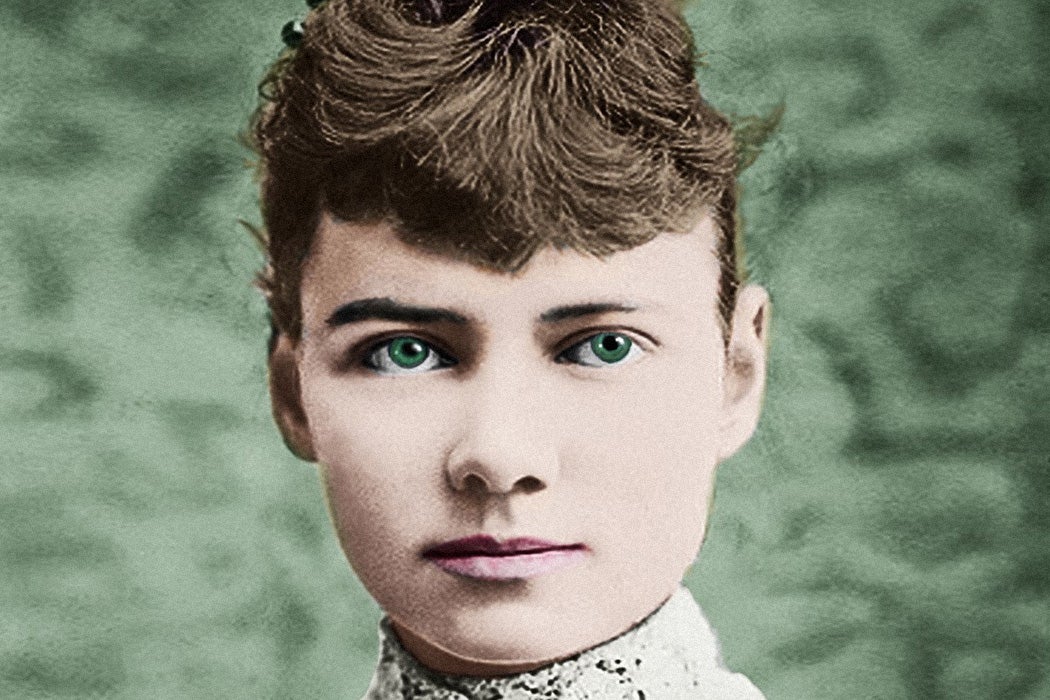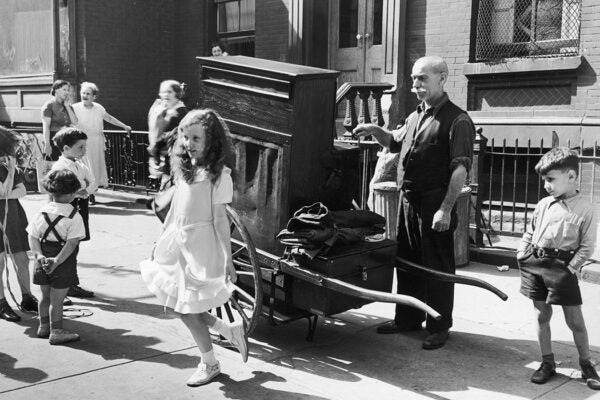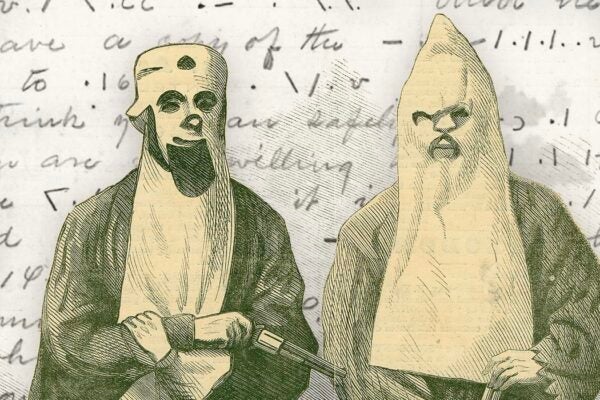In September 1887, a petite young woman was brought before doctors at Bellevue Hospital in New York. Upon observing the vacant look in her eyes and hearing her repeatedly mumble something about a missing trunk, they pronounced her hysterical and committed her to the New York City Lunatic Asylum on Blackwell’s Island. Today, this name is synonymous with abusive conditions, sadistic nurses, and sane women held against their will, often because they didn’t speak English. We know this because the pale-faced young woman in question was in fact Nellie Bly, one of the first female undercover reporters.
Bly’s exposé, a series of articles published in the New York World entitled “Ten Days in a Mad-House,” led to public outrage and ultimately asylum reform. It also catapulted the tenacious twenty-three-year-old to the top of New York’s journalism scene, quite the U-turn given that she had spent the preceding months having doors slammed in her face because of her gender.
As David Randall writes in his 2005 book, Great Reporters, “Nellie Bly’s life resembles nothing so much as the plot of a particularly far-fetched Victorian novel.” Born Elizabeth Jane Cochran on May 5, 1864, and nicknamed Pinky, Bly initially experienced a happy childhood. That happiness was curtailed after six years when her father, Judge Cochran, died intestate. The situation would have been confusing enough given that he had fifteen children, but it was even further complicated by the fact he had two wives, one in common law. The result was destitution; the family’s fortunes fell further when Bly’s mother, Mary, remarried a violent alcoholic. Constrained by poverty as well as expectations that she would become a mother and housewife, Bly began plotting her escape.
In 1885, at the age of twenty-one, Bly wrote a fiery letter to the Pittsburgh Dispatch about gender rights, signing it “Lonely Orphan Girl” for added melodrama. The editor, George Madden, knew talent when he saw it and offered her a job on the spot, writes Randall. During her time at the Dispatch, she wrote her first exposés of prison and factory conditions; she also undertook a six-month stint in Mexico with her mother as chaperone, covering the abuses of the Porfirio Díaz dictatorship. Her reward was a pay rise—and being named editor of the society pages. With her passion for fighting discrimination and injustice, Bly was appalled by the appointment. Shortly after, her colleagues found a hand-scrawled note on her desk that read, “I have gone to New York. Look out for me.”

Once ensconced at the New York World, Bly undertook a series of roles that allowed her to expose unreported issues that dogged women’s lives: a single mother with a child born out of wedlock, a prostitute in a home for “fallen women,” a glove seller to uncover how salesgirls were treated by New York’s elite. Although she proved herself a master of disguise and competent wordsmith many times over, her editors were still appalled when she suggested the story for which she is best known: an epic circumnavigation of the globe in just seventy-five days. Inspired by Jules Verne’s novel Around the World in 80 Days, the stunt was particularly ambitious in a time when a woman traveling alone could cause a scandal.
At 9:40 a.m. on November 14, 1889, Bly set sail on the Auguste Victoria bound for London. She had with her little more than a single dress, paper and pens and a large jar of cold cream. More than 1 million readers devoured her irregular dispatches, which included highlights such as buying a monkey called McGinty, who sported a little fez and an attitude as irreverent as its owner, in Singapore; spending Christmas day at a leper colony outside Guangzhou, China; and threatening to slit her throat when the crew of the Oceanic told her there was a bureaucratic delay that would add fourteen days to the journey.
Despite numerous setbacks and adverse weather conditions, Bly beat her target, arriving in America seventy-two days, six hours, eleven minutes, and fourteen seconds after she left to find rapturous crowds awaiting her. Her status as the sweetheart of America’s journalism world seemed assured and her book, Around the World in 72 Days, flew off the shelves. On January 26, 1890, the day after she returned to the United States, the New York World published the first version of the board game Round the World with Nellie Bly, a Novel and Fascinating Game with Plenty of Excitement by Land and Sea. As cultural historian and science fiction scholar Marie-Hélène Huet describes, each of the seventy-two squares featured places or people had seen during her journey (one featured Jules Verne, whom she had visited in Amiens).
In true Bly fashion, she did something wholly unexpected after her victorious return: she eloped with industrialist Robert Livingston Seaman, who was more than forty years her senior and whom she had known for a grand total of two weeks. As detailed by Brooke Kroeger in her 1994 book Nellie Bly: Daredevil, Reporter, Feminist, Bly retired from journalism and when her husband died, inherited his fortune and became president of his company. Soon after, his partners embezzled her out of more than $1.6 million. Once again, she found herself stone broke.
Weekly Newsletter
One might imagine that this misfortune combined with her advancing years might make her a little more risk averse. However, when war was declared in Europe, she dusted off her typewriter and rushed to the front. In her review of Kroeger’s book, Emily Toth reminds us that Bly
was the first woman to do it all: risk arrest as a British spy; visit the war zone; climb into a trench and almost get herself killed. She hated the cold and filth, but abandoned her fur coat (it weighed fifty pounds) when it kept her from moving quickly from front to front. She was in her mid-fifties, and in her element.
There was one remaining feat of victory-snatched-from-despair to come. When Bly returned from Europe in 1919 and discovered that her brother had seized everything she owned, even her house, she began campaigning in the pages of the New York Evening Journal for more equitable legal rights for working women. At the age of fifty-seven, she adopted a foundling baby. But a year later, worn out by several lifetimes’ worth of adventures, she contracted pneumonia. She died on January 27, 1922.
Her work paved the way for generations of female reporters to come. She may have gone around the world in seventy-two days, but in her too brief fifty-seven years had run nearly the full gamut of the female experience.







